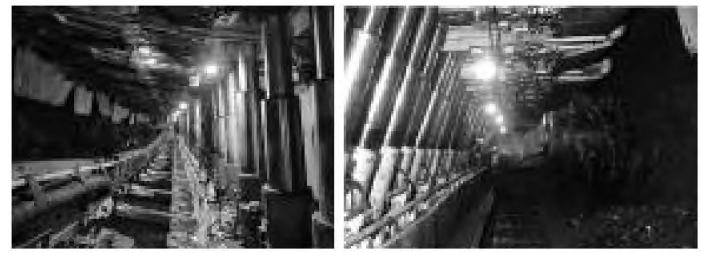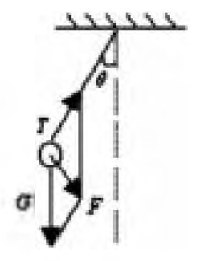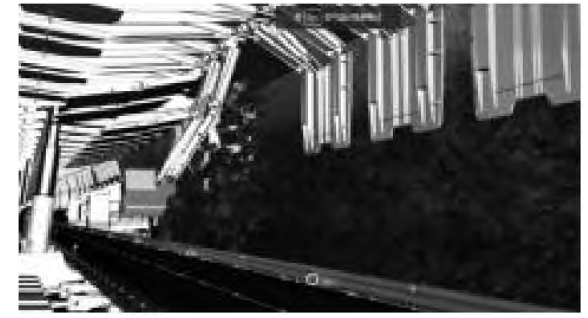The application of tilt sensor in the technology of protection plate of hydraulic support
1 Overview
Hydraulic support, as a support equipment for heirloom face, its value accounts for about 60%-70% of the total value of the entire heirloom equipment, which is an indispensable key equipment for coal enterprises to build high-yield, efficient and safe coal mining mines, and is also a mechanical product highly related to coal mining enterprises and the energy industry.
The electro-hydraulic control system is the control component of the hydraulic support. Hydraulic support according to the control principle can be divided into hydraulic direct control support, hydraulic pilot control support and electro-hydraulic control support. Compared with the previous two control methods, the electro-hydraulic control bracket has significant advancement. However, the further popularization of electro-hydraulic control technology has brought new problems.
In the automatic retracting process, the hydraulic support protection plate will be folded in advance before the arrival of the shearer drum through electro-hydraulic control technology, and the position will be received at one time. Manual operation, according to the coal wall of the sheet will control the Angle of folding. When the coal wall of the working face has a piece, the protection plate can be 90 percent in the receiving and the top beam. When stopped, it does not affect the shearer through the machine and can ensure that the coal falls in the front chute, and the electro-hydraulic control bracket technology has not achieved this function. However, manual operation will cause misoperation or improper operation, resulting in injury to personnel.
2 The use and function of the hydraulic support panel
Hydraulic support wall protection plate is an important part to prevent coal wall. The principle is to connect with the protective jack, and connect with the front beam component, and rotate with it as the axis, so as to achieve the effect of the protective jack supporting the pressure of the coal wall.
The hydraulic support plate is essentially a simple welded plate. When the coal wall needs protection, the lower part of the protection plate of the hydraulic support can be pressed against the coal wall under the action of the protection jack (see Figure 1). When applying the hydraulic support protection plate, it is necessary to timely recover the protection device before the arrival of the coal miner (see Figure 2) to avoid affecting the smooth passage of the coal miner. If there are problems such as roof caving and beam end distance being too large, the protection plate can be turned over to temporarily support the square roof on the coal wall. However, during the use of the protection board, if used improperly, it may cause injury or damage to the equipment.

Figure 1 State of open protective panel
FIG. 2 State of shearer with retracted shearer
3. Causes and hazards of coal wall sheeting
After the mining layer is extracted, there is a hanging in the goaf roof rock layer, and its pressure is transferred to the coal wall, and the pressure on the coal wall increases, forming a pressurized area. Under the action of additional load, part of the coal is crushed and squeezed to the goaf, which is called sheeting.
3.1 Causes of coal wall sheeting
① Seam joint development and fissure development.
② Coal quality stability is poor, relatively soft.
③ The distance between the end face and the height of the working face are relatively large.
④ The support strength of the support can not support the roof pressure of the coal wall.
⑤ The upward direction of coal seam joint and working face is close to vertical.
⑥ Long-term exposure of coal walls.
The coal body has been destroyed by geological processes, and the coal body is located under the top residual coal pillar.
⑧ The pressure effect of the roof of the working face.
3.2 Hazards of coal wall sheet
First of all, the mining height of the large mining height face is large, and the coal wall shingles seriously affect the personal safety of the workers and the normal production. The phenomenon of coal wall slicing occurs frequently in the complex geological structure area, the width of the slicing is usually several meters to tens of meters, and the phenomenon may occur in the whole working face. The surface depth is usually not less than 3m and not more than 5m. The large coal falling will smash and deform the scraper conveyor of the working face, and even affect the sidewalk inside the support. Large pieces of falling coal prevented coal miners from passing through, which affected normal coal cutting.
Secondly, once the phenomenon of coal wall sheet occurs, the empty top distance will become larger and larger, resulting in the phenomenon of end-face leakage. At this time, the deterioration of the roof conditions will lead to the problems of poor roof connection and unequal force of the support, and the support components will be damaged under multiple actions, which will further cause the relationship between surrounding rock and the support to become more unstable, resulting in roof accidents. This is a vicious circle, which will lead to the difficulty of high equipment to play its due performance, resulting in serious production safety problems.
Finally, in the process of coal cutting, the coal falling in front of the frame affects the normal pulling of the support, and it needs to be manually cleaned before moving the frame. At the same time, the coal falling between the shelves is not cleaned thoroughly, resulting in the waste of coal resources and reducing the recovery rate.
4 Working principle of tilt sensor
There are many other names for inclination sensors, common nicknames include inclinometer, clinometer, level, and inclinometer, which are often used for the measurement of the horizontal Angle change of the system. In the past, such sensors were just simple bubble levelers. With the development of automation and electronic measurement technology, the types of tilt sensors are gradually increasing, which can be divided into three types according to the working principle, namely, "solid pendulum", "liquid pendulum", "gas pendulum". Due to the high temperature of underground working environment, "gas pendulum" is not suitable for underground, so this paper only discusses the first two inclination sensors (3).
The "solid pendulum" inclination sensor uses Newton's second law as its operating principle. According to the law, when it is at rest, it is only affected by the acceleration of gravity. At this time, the Angle between the sensitive axis of the acceleration sensor and the vertical axis of gravity is the inclination Angle, that is, the Angle desired.
The force balance servo system is used in the "solid pendulum", as shown in Figure 3. The system consists of three parts, namely, support, cycloid and pendulum. The force of gravity G and the force of the pendulum T affect the pendulum, and the combined force of the pendulum F = G sinO = mg sinO. 0 Indicates the Angle between the cycloid and the vertical direction. When measuring a small Angle range, F and 0 can be regarded as a linear relationship, which is also the application principle of strain gauge inclination sensors.

FIG. 3 Schematic diagram of the "solid pendulum" inclination sensor
The structural principle of the "liquid pendulum" is shown in Figure 4. The conductive liquid is installed in the glass shell, and the conductive liquid is connected to the outside through 3 clamp electrodes. The distance between the three electrodes is equal and parallel to each other. When the housing is horizontal, the electrodes remain at a consistent depth in the conducting fluid, as shown on the left in Figure 4. At this point, an alternating voltage of equal amplitude is applied between the two electrodes to form an ionic current. The liquid between the two electrodes can be regarded as resistance, Ri and Rm respectively. When the liquid is horizontal, the two resistors are equal. However, when the glass shell is tilted, the liquid is no longer in a horizontal state, at this time, the amount of conductive liquid between the electrodes will be different, and the depth of the electrode into the conductive liquid will also change, as shown in the right side of Figure 4, the depth of the middle electrode is basically unchanged, the depth of the left electrode and the amount of conductive liquid are significantly reduced, and the depth of the right electrode and the amount of conductive liquid are significantly increased. At this time, the resistance RI increases significantly and the resistance dish decreases significantly. Similarly,RI <Rm when the tilt direction is opposite.

FIG. 4 Schematic diagram of the "liquid pendulum" inclination sensor
The change of the strain gauge caused by the change of liquid position is an application form of "liquid pendulum", at this time, the output electrical signal will produce a certain change to achieve the effect of sensing the change of inclination. Leaving bubbles in the electrolyte solution is also an application form of "liquid pendulum", when the device is tilted, the position of the bubbles will change, which in turn causes the capacitance to change synchronously, achieving the effect of sensing the change in inclination.
5 Application and principle of electro-hydraulic control technology in hydraulic support
Hydraulic support controller, as a microcomputer controller dedicated to hydraulic support control in coal mine, is the core of the support electro-hydraulic control system. The hydraulic support controller is the key to comprehensive control of hundreds of hydraulic supports in the underground working face. It can organically combine hundreds of hydraulic supports through the bus in the field and use the data collected by the sensor to carry out the corresponding control logic calculation (5). Then the solenoid coil control circuit is used to drive the switching action of the solenoid valve. Hydraulic support controller can realize the stroke of hydraulic actuator components, such as hydraulic jacks, hydraulic cylinders and other components, but also to control the hydraulic support, according to the preset attitude control hydraulic support. Hydraulic support controller can create feeding and following working space for coal mining machinery, which is of great significance to the normal operation of coal mining machinery.
The hydraulic support electro-hydraulic control device can operate independently without configuring the server or control center, and the communication between the hydraulic support controller and the hydraulic support controller is mainly realized through the fieldbus. With the aid of fieldbus, data exchange and mutual control can be realized.
Hydraulic support electro-hydraulic control device controller is essentially a micro control computer, which is specially used for hydraulic support electro-hydraulic control work. The controller is composed of software and hardware. The hardware is composed of memory, microprocessor, communication interface and input/output interface. Software consists of system program and application program. The hydraulic support electro-hydraulic control device supports the storage and operation of the program, which is responsible for directing all the actions of the support. In addition, the hydraulic support electro-hydraulic control device controller also has liquid crystal display, LED buzzer, button and other components, which together constitute the human-computer interaction interface. Staff can use keys to operate, to achieve command control, display and issue. It also has a communication interface, which can realize the automatic monitoring and control of hydraulic support. The adjustment of the control program parameters can be easily achieved by pressing buttons to complete the operation of setting, input and modification. It also supports online installation of new applications, which can achieve quick modification and adjustment of the program. The electro-hydraulic control device of hydraulic support is composed of distributed control system. With the aid of intelligent controller, it can realize single manual and automatic work, group and on-line automatic work.
The electro-hydraulic control device of hydraulic support is an important guarantee for realizing underground control and connecting each support controller to communicate. With the aid of fieldbus, it can realize data exchange, mutual control and other functions, and can easily be linked with underground mining equipment, such as tape machine, scraper, shearer and other equipment. With the aid of the hydraulic support electro-hydraulic control device, the remote monitoring center and roadway control center can be constructed. The system does not need a server, nor does it need a ground monitoring center or a channeling control center, and supports independent operation. It can be connected with the coal miner and scraper conveyor under the assistance of the support controller and the roadway control center to realize the comprehensive self-mining of the working surface. The system also supports the data transmission with the ground monitoring center, so as to realize the real-time monitoring of the coal mining process of the working face and mine. The remote monitoring center can obtain the specific data of the support through the system, so as to understand the operation process of the support, the position of the shearer, the pressure, the stroke and other parameters.
6 Application of tilt sensor in the technology of hydraulic support wall protection plate
An inclination sensor is installed on the inside of the hydraulic support panel. In the hydraulic support electro-hydraulic control controller PLC programming, set the hydraulic support protection board to recover according to the Angle control. When the shearer is moving, the infrared sensor senses the position of the shearer and transmits the approach instruction of the shearer to the electro-hydraulic controller of the hydraulic support. After receiving the signal, the controller issues instructions to the solenoid valve driver of the hydraulic support, and then acts on the solenoid valve of the hydraulic support expansion beam and the protective panel jack to drive the main valve of the protective panel jack. At this time, the expansion beam of the hydraulic support and the jack of the protection plate shrink at the same time, when the protection plate and the top beam form 90. Stop at an Angle (see Figure 5). The expansion beam jack continues to contract until it is close to the sensor connection and the expansion beam has been fully received. At this time, if the coal falls on the wall, the coal will fall on the protection plate and fall back to the front conveyor, which can effectively avoid the coal falling in front of the support. After the coal miner passes through, the hydraulic support protection plate is automatically recovered through the controller program, which is convenient for the hydraulic support behind the roller of the coal miner to move with the machine.

FIG. 5 The protection plate of the hydraulic support is withdrawn to 90°
7 The advantages of tilt sensor in the application of hydraulic support wall protection plate anti-sheet technology
Through the application of tilt sensor in the protection plate of hydraulic support, it can effectively avoid the injury caused by improper use of the protection plate, damage to the equipment or cut by the shearer drum.
Through the application of tilt sensor in the protection plate of hydraulic support, the working environment of coal miners is improved and the working intensity is reduced. Previously, coal on the wall panel fell between the hydraulic support and the front conveyor and could only be recovered by manual cleaning. Through the application of the tilt sensor of the hydraulic support sheathing plate, it can reduce the reliance of coal mining on people, reduce the time that coal miners stay in the harsh environment, and greatly improve the working environment and safety of coal miners
Working conditions. At the same time, there is no coal falling in front of the support, which improves the speed of the hydraulic support moving with the machine, thus improving the working efficiency of coal mining.
Through the application of tilt sensor in the protection plate of hydraulic support, it can effectively prevent coal pieces from falling to the front of the hydraulic support when the coal wall pieces are stacked, improve the coal resource recovery rate, and solve the production process problems under special geological conditions and difficult production conditions, which is conducive to ensuring personal safety and providing the possibility for realizing the underground unmanmade work.
References:
[1] Zhang Xuanlei, Yang Yongjie. Analysis and prevention of influence causes of coal wall and large lump coal (culm) in super high Jurassic mining face [J]. Shenhua Technology,2019,17(08) : 24-26+40.
[2] LI Feng. Mechanism analysis and prevention measures of coal wall caving in fully mechanized mining face [J]. Energy and Energy Conservation 1,2015(05):129-131.
[3] Ren Dapeng. Analysis of coalface and its causes in Changping Coal Mine [J]. Modern Economic Information,2017(02) : 367+398.
[4] Ge Jiexin. Application analysis of electro-hydraulic control technology in hydraulic support of fully mechanized mining face [J]. Contemporary Chemical Industry Research,2019(01):84-85.
[5] LIANG Kai. Design of Electro-hydraulic Control System for Hydraulic Support of Fully Mechanized Coal Mine [J]. Mechanical Engineering and Automation,2022(03) : 179-180+183,
[6] Guo Yongfei. Research on prevention and control technology of coal wall caving in fully mechanized mining face [J]. China Petroleum and Chemical Industry Standards and Quality,202,42(11) : 176-178.
[7] Guo Lizhong. Study on comprehensive treatment technology of coal slab in high mining height fully mechanized mining face [J]. Shanxi Metallurgy,2022,45(2) (in Chinese)



